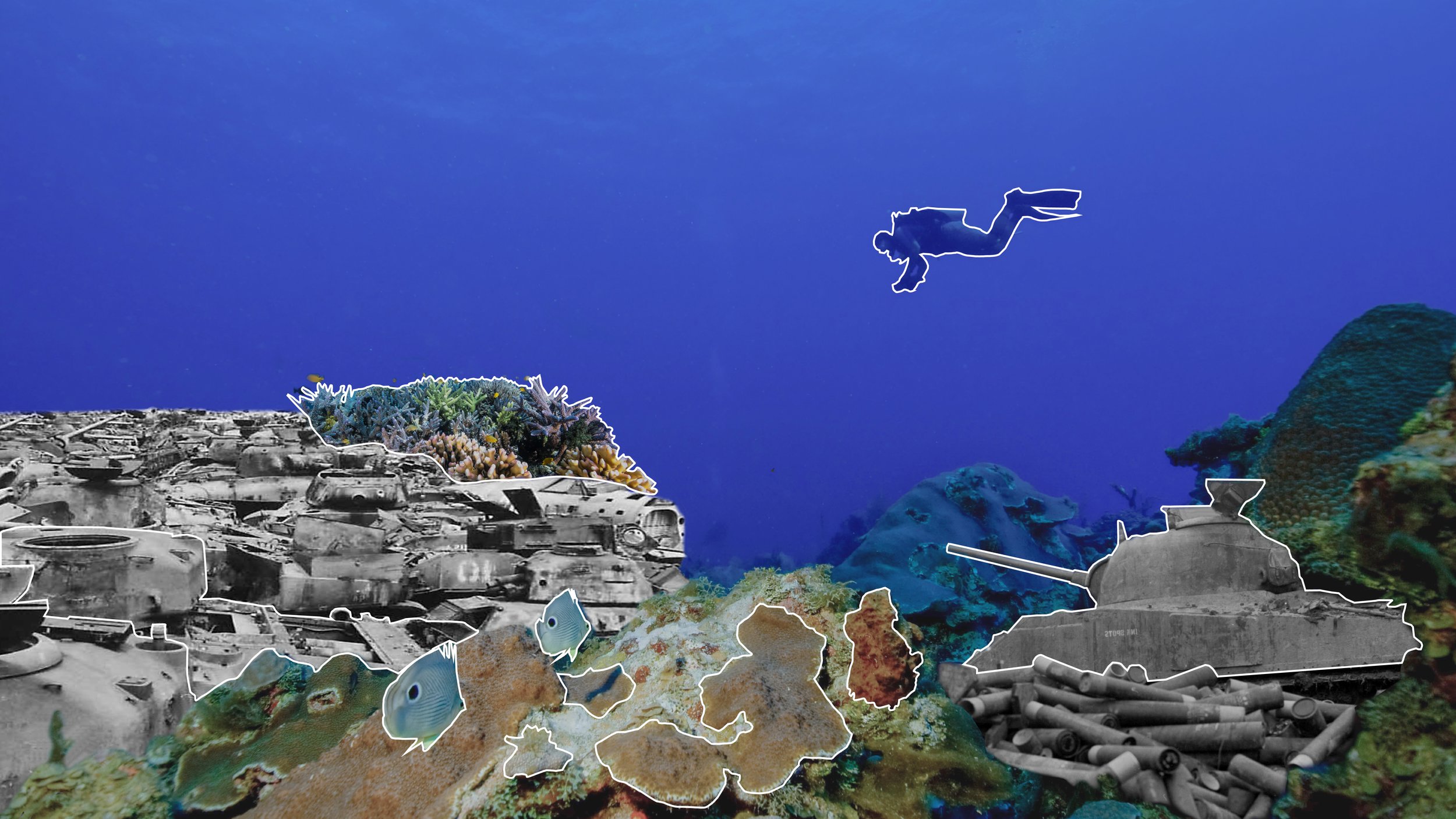As global warming becomes more severe and causes rising seawater temperatures, global coral reefs have migrated toward subtropical areas. Knowing that an estimated 25% of marine life depends on the coral reef ecosystem makes restoring the coral environment an urgent necessity. Up till today, many countries have been using armored vehicles as a structure to regrow coral reefs and restore the ecosystem.
This gesture of using decommissioned destructive weapons as a reparative object to restore the corals has also brought up other questions. What is the value of an armored weapon? While coral migration occurs in many parts of the world, what is the new ecosystem, and how does it affect the original environment?
My architectural interest looks at the process of cause and effect across time and scale. In a sense, how various stakeholders create many different outcomes. Even a small detail can be a huge factor in the system. This semester's broad research theme is how island formation is constructed through this hybridization relationship of artificial (large discard) and natural( living organism).
Under this broad topic, the research focuses on the trajectorial process of (artificially?) creating the temporal island.
A transformative process generates a moving coral reef island that expresses the adaptive effect and reveals the new ground condition. The transformed military waste has been redefined. Destructive weaponry has become a site to provide a new ecosystem for coral to live for 200 years. Thus, what is the future possibility (value) of the significant artifact (Waste)?
I'm using a series of section drawings at various time frame scales to investigate these possibilities and different values to seek the new value and collage to express the effects.












